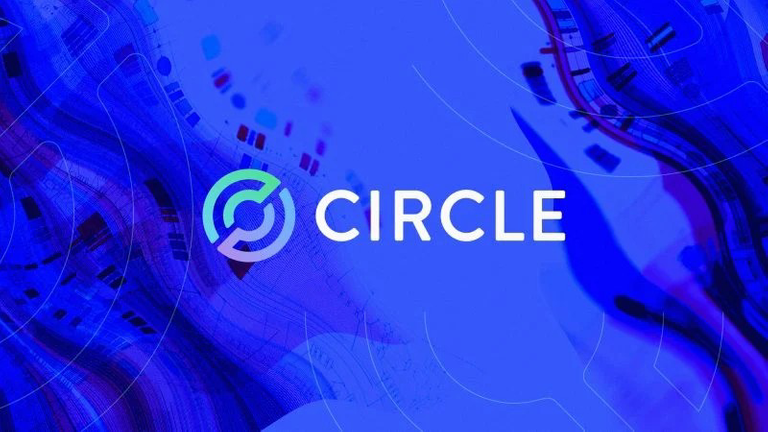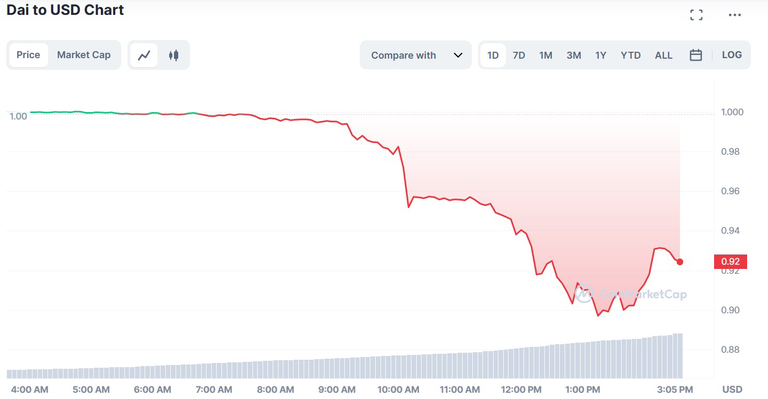USDC: A centralized stablecoin
The USDC case demonstrated very well that a stablecoin that stores its reserves, or part of them, in a centralized institution is no more secure than an algorithmic stablecoin like HBD. Indeed, at the time of the USDC depeg, HBD held the price very well especially in the Hive domestic market, not detaching itself from its $1 value.

But why did USDC drop below $1?
The story is closely linked to the bankruptcy of the Silicon Valley Bank, a bank in which Circle, the issuer of USDC, held the consideration of 3.3 billion dollars, equal to about 8% of the total value held, about 40 billion.
Cash liquidity, in fact, is held with various Banks: Bank of New York Mellon, Citizens Trust Bank, Customers Bank, New York Community Bank, a division of Flagstar Bank, N.A., Signature Bank, Silicon Valley Bank and Silvergate Bank.
Silvergate Bank recently went bankrupt, but Circle said it moved its cash reserves from there in time. Unfortunately it wasn't as fast with SVB so there is a withdrawal in progress but it wasn't fast enough, having arrived in the meantime the bankruptcy request of the Silicon Valley bank.

The question I focus on is this: is $USDC a centralized stablecoin?
The USD reserves are allocated in banks, and if on the one hand this reassures the market, on the other hand it must also be feared since the banking institutions themselves are not without dangers. SVB nor is full proof, as was Silverbank.bWhat if the SEC decides to freeze Circle's USD funds? The banks could not object and the stablecoin hedges would be void.
Decentralization can guarantee a more secure stablecoin but it is necessary to adopt greater protection tools to avoid meltdowns such as Terra-UST. In all of this $USDC has touched the minimum level of $0.88 and then recovered to $0.97 at the time of writing. Circle has confirmed that withdrawals will be available as early as Monday, as well as saying they are optimistic about recovering the amounts blocked in the SVB.
Circle executives said they could either cover the loss with company funds or access additional loans to cover the amount locked in SVB, if needed. It will be interesting to observe the developments in the next few hours.
ITA
Il caso USDC ha dimostrato molto bene che uno stablecoin che custodisce le proprie riserve, o parte di esse, in un istituto centralizzato non è più sicura di una stablecoin algoritmica come HBD. Anzi, al momento del depeg di USDC, HBD ha tenuto molto bene il prezzo soprattutto nel mercato interno di Hive, non distaccandosi di fatto dalla suo valore $1.

Ma perché USDC è sceso sotto il valore $1?
La vicenda è strettamente legata al fallimento della Silicon Valley Bank, banca in cui Circle, l'emittente di USDC, deteneva il corrispettivo di 3,3 miliardi di dollari, pari a circa 8% del totale valore detenuto, circa 40 miliardi.
La liquidità cash, infatti, è detenuta presso varie Banche: Bank of New York Mellon, Citizens Trust Bank, Customers Bank, New York Community Bank, a division of Flagstar Bank, N.A., Signature Bank, Silicon Valley Bank e Silvergate Bank.
Silvergate Bank è recentemente fallita, ma Circle ha comunicato di aver spostato le sue riserve cash da lì per tempo. Purtroppo non è stata altrettanto rapida con SVB per cui risulta un prelievo in corso ma non è stato sufficientemente rapido, essendo giunto nel frattempo la richiesta di fallimento della banca di Silicon Valley.

La questione su cui io pongo attenzione è questa: $USDC è una stablecoin centralizzata?
Le riserve USD sono allocate in banche, e se da un lato ciò rassicura il mercato, dall'altro lato bisogna anche temerlo poiché gli stessi istituti bancari non sono esenti da pericoli. SVB né è la piena dimostrazione, come lo è stato Silverbank.bcosa succederebbe se la SEC decidesse di bloccare i fondi USD di Circle? Le banche non potrebbero opporsi e le coperture della stablecoin sarebbero nulle.
La decentralizzazione può garantire una stablecoin più sicura ma è necessario adottare strumenti maggiori di protezione per evitare tracolli come Terra-UST. In tutto ciò $USDC ha toccato la quota minima di $0.88 per poi risalire a 0.97$ al momento in cui scrivo. Circle ha confermato che i prelievi saranno disponibili già da lunedì, oltre ad affermare di essere ottimista nel recupero delle somme bloccate nella SVB.
Qualora fosse necessario, per coprire la somma bloccata in SVB, o dirigenti di Circle hanno affermato la possibilità di coprire la perdita con fondi aziendali oppure di accedere ad ulteriori prestiti. Sarà interessante osservare gli sviluppi nelle prossime ore.
Posted Using LeoFinance Beta
Honestly, HBD has proven to be a better project that the Circle, centralized institution.
I really hope they pull through because a great deal of people were affected
@tipu curate
Upvoted 👌 (Mana: 27/37) Liquid rewards.
Grazie mille ☺️
Sembra che dopo Silvergate Bank e Silicon Valley Bank anche Signature Bank abbia problemi di solvibilità.
La solidità delle istituzioni finanziarie tradizionali è basata su ignoranza e su una montagna di fiducia ... mal riposta
!PGM
BUY AND STAKE THE PGM TO SEND A LOT OF TOKENS!
The tokens that the command sends are: 0.1 PGM-0.1 LVL-0.1 THGAMING-0.05 DEC-15 SBT-1 STARBITS-[0.00000001 BTC (SWAP.BTC) only if you have 2500 PGM in stake or more ]
5000 PGM IN STAKE = 2x rewards!
Discord
Support the curation account @ pgm-curator with a delegation 10 HP - 50 HP - 100 HP - 500 HP - 1000 HP
Get potential votes from @ pgm-curator by paying in PGM, here is a guide
I'm a bot, if you want a hand ask @ zottone444
Una grande montagna di fuffa, ecco cosa sono
There was a time when crypto apoeared like all profit thing. Then the time displayed its vulnerability.
HBD has proved to be promising so far. I hope USDC will also come out of its crisis
Posted Using LeoFinance Beta